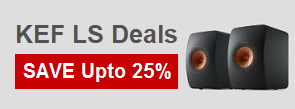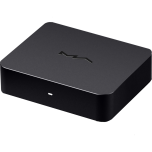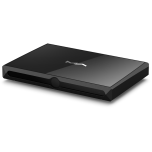DACs - Matrix Audio
If you enjoy listening to music from your computer or portable player and want the best sound quality, you need a dedicated DAC (digital to analogue converter). In many cases, the soundcard or "headphones" output on your device is designed for cost rather than sound quality. By using a dedicated DAC, you bypass these and take the digital signal from your device. Many DACs include USB, as well as coaxial (RCA) and/or optical (Toslink) inputs for connection to other digital sources e.g. disc player, soundbar, etc. You can connect any of these DACs to your hi-fi amplifier or headphone amp, although if you're building a headphones system from scratch many of these DACs also include a dedicated headphones output. We also sell hi-fi streamers to stream directly from Tidal, Spotify, etc. Please contact us if you need help choosing.
Matrix Audio is a hi-fi digital audio company founded in 2009 in the ancient city of Xi'an, China. Their DAC's, amplifiers, digital streamers and other products focus on providing high performance, and great usability and quality
For 10 years now, Matrix Audio have been developing an excellent reputation among the hi-fi industry in China and around the world, establishing a great brand image among audiophiles. The company employs vigorous professional testing, extensive research and audio analysis to ensure their products are of the highest quality.
The concept of Matrix is derived from the mathematical term which emphasises balance between two dimensions. Incorporated in to every product's design is the elements of looking and seeing, their mission being that their digital audio products should have both exceptional sound performance and appealing designs that will be in harmony with any living environment.
The company began in 2006 with the DA-100, and have progressed to today where we see the evolution of the Element series which was developed in 2018. Their aim is to keep up with technological advances and put copious amount of research in to their products. As a brand born from audiophiles, they understand exactly what their customers want, and drive to make their products as accessible as they can be.
Storing your music digitally, on a computer, laptop or NAS drive is now an incredibly viable and easy way of enjoying hi-fi quality sound, particularly with the prevalence of high quality FLAC and lossless files available. Using a good quality DAC can really make such digital audio sources an incredible way of enjoying your music, and in the case of high resolution files, can be essential to enjoy them at their full resolution and bit depth. With many high resolution files now exceeding the quality of CD, a quality DAC capable of playing such files enables you to enjoy stunning high-fidelity audio.
Many DACs offer a range of digital inputs, typically optical and coaxial, while some also feature USB functionality. Each input may have different capabilities in terms of the bit depth and resolution it is capable of playing. If you are looking to play particularly high resolution files via a certain input it is worth checking that the prospective DAC is able to play these. Some models will only offer 24bit/96kHz over some inputs, meaning that 24bit/192kHz files would not be able to play at their full rate. This only effects the highest quality downloads and audio files, and anything ripped from a CD will be stored in 16bit/44kHz, which most, if not all DACs are capable of playing.
When using your DAC via USB, many models now offer asynchronous USB connection. Unlike with a CD Transport, an asynchronous USB connection allows for the DAC itself to control the clock speed of the digital connection, which dramatically reduces jitter and ensures a high quality signal and sound. If you intend to use your computer or laptop as an audio source, asynchronous USB is definitely something to look out for. While many models feature a USB input, if the model you're looking at doesn't have this feature, you'll also need a USB to S/PDIF Converter if you want to use your computer via USB. This will convert the digital signal from your computer’s USB, and enable you to connect to the optical or coaxial input.
Once the DAC has converted the digital audio, it is outputted as an analogue signal, typically via RCA phono outputs which can then be connected to a pre amplifier or integrated amplifier. Some models offer alternative outputs, such as Balanced XLR which increase the range of connectivity options as well as the range of products which can be used.


















































































